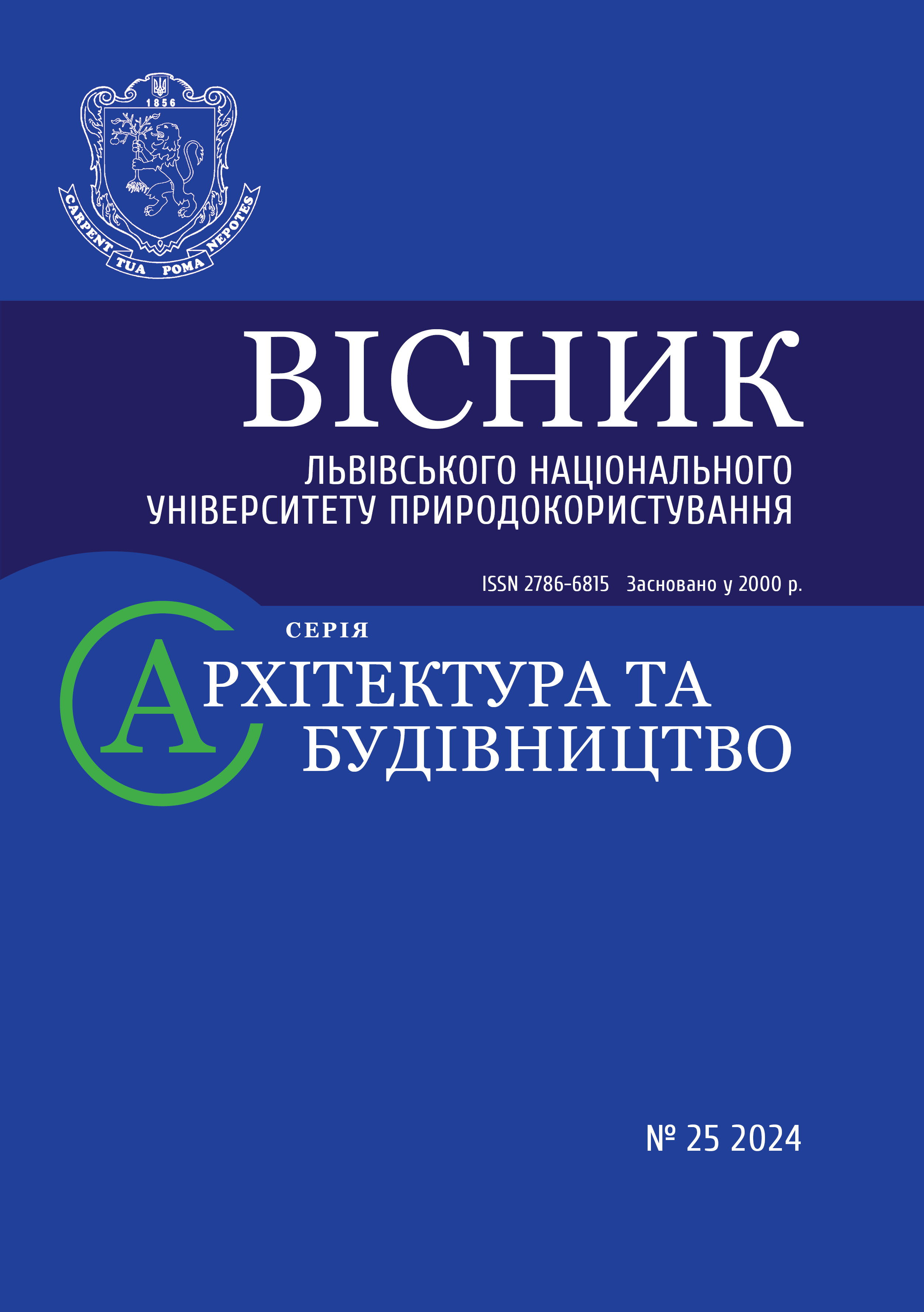THE HISTORICAL BASIS FOR SUSTAINABLE MODERNIZATION OF MASS PANEL RESIDENTIAL CONSTRUCTION IN THE CONTEXT OF THE "15-MINUTE CITY" CONCEPT
DOI:
https://doi.org/10.31734/architecture2024.25.149Keywords:
sustainable modernization, modernization, mass panel residential construction, 15 minute city, modernization of residential buildingsAbstract
Mass residential development during the Soviet era followed the principle of micro-districts and neighborhoods. As a result, the concept of a short-distance city is not new. However, with the introduction of the Sustainable Development Agenda, this idea has gained a new name: the "15-minute city." Researchers are also exploring the concepts of 20-minute and 30-minute cities. The need to redesign urban areas based on this principle arises from the necessity for accessibility to essential infrastructure, such as educational and medical institutions, shops, and recreational areas. As cities have grown, the reliance on private transport has increased, leading to higher energy consumption and environmental harm due to the emissions of harmful substances into the air. The 15-minute city concept promotes accessibility to daily necessities, including workplaces, within a 15 to 30-minute walk or bicycle ride. Sustainable modernization, which involves upgrading residential buildings based on principles of sustainable development, is an integral part of urban planning. The revitalization of old residential buildings, along with their surrounding areas, can be viewed through the lens of sustainable modernization in the context of the 15-minute city. The aim of this research is to shed light on this theoretical concept. Descriptive and visual methods are employed to provide justification and insight into the historical foundations and existing architectural and planning solutions of residential neighborhoods that can implement this principle. This concept offers the potential for complex modernization projects of old panel residential buildings, not just in Ukraine but also in other post-Soviet countries. Given that these panel residential buildings were constructed en masse following similar principles and designs, they represent a significant portion of the housing stock in these countries. The architectural and spatial planning of residential neighborhoods from the Soviet period supports the revitalization of such districts in line with the 15-minute city concept.
References
AlWaer H., Cooper I. Unpacking the concept of 20-minute neighbourhoods: disentangling «desired outcomes» from the «means» available for achieving them. Open House International. 2023. No 48 (4). P. 704–728. https://doi.org/10.1108/OHI-11-2022-0285.
Andrianova A. Architecture of soviet housing and main soviet urban planning concepts. May 2015. http://doi.org/10.13140/RG.2.1.5147.5366. URL: https://www.researchgate.net/publication/276279685_ARCHITECTURE_OF_SOVIET_HOUSING_AND_MAIN_SOVIET_URBAN_PLANNING_CONCEPTS (Accessed June 20, 2024).
Award O., Moreno C. Definition of the 15-minute city: WHAT IS THE 15-MINUTE CITY? October 2021 Conference: OBEL AWARD Jury. 2021. URL: https://www.researchgate.net/publication/362839186_Definition_of_the_15-minute_city_WHAT_IS_THE_15-MINUTE_CITY (Accessed June 25, 2024).
Both A., Gunn L., Higgs C., Davern M., Jafari A., Boulange C., Giles-Corti B. Achieving ‘Active’ 30 Minute Cities: How Feasible Is It to Reach Work within 30 Minutes Using Active Transport Modes? ISPRS International Journal of Geo-Information. 2022. No 11 (1). P. 58. https://doi.org/10.3390/ijgi11010058.
Capasso Da Silva D., King D.A., Lemar S. Accessibility in Practice: 20-Minute City as a Sustainability Planning Goal. Sustainability. 2020. No 12 (1). P. 129. https://doi.org/10.3390/su12010129.
Howard E. To-morrow: a peaceful path to real reform. London Swan Sonnenschein & CO., Ltd, Paternoster Square, 1989. 176 p. URL: https://archive.org/details/tomorrowpeaceful00howa/page/176/mode/2up (Accessed June 19, 2024).
Levinson D. M. The 30-Minute City: Designing for Access. Network Design Lab, 2019. URL: https://hdl.handle.net/2123/21630 (Accessed June 20, 2024).
Levinson D. The 30-Minute City. Transfers Magazine. (Spring 2020). 2020. URL: https://transfersmagazine.org/wp-content/uploads/sites/13/2020/05/Transfers5_Levinson_30MinCity.pdf (Accessed June 19, 2024).
Moreno C. The 15-Minute City: A Solution to Saving Our Time and Our Planet. Wiley, 2024. 304 p.
Moreno C., Allam Z., Chabaud D., Gall C., Pratlong F. Introducing the “15-Minute City”: Sustainability, Resilience and Place Identity in Future Post-Pandemic Cities. Smart Cities. 2021. No 4. P. 93–111. https://doi.org/10.3390/smartcities4010006.
Perry C. A. The neighborhood unit, a scheme of arrangement for the family-life community. Monograph One in Neighborhood and Community Planning, Regional Plan of New York and Its Environs. 1929. Vol. 7. New York: Committee on Regional Plan of New York and Its Environs, 1929. Pp. 22–140.


